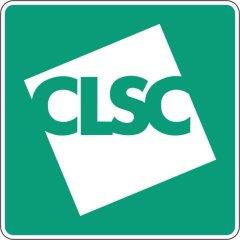
Direct Allocation Program With Service Employment Paycheque: How to See Clearly
The government offers financial support for home care services through the service employment paycheque. This program is dedicated to people with a disability or a loss of independence who require long-term home care. Caregivers taking charge of these home care services for their loved ones can also benefit from the program. It allows people to stay at home rather than to live in a residence with care services. The objectives are:
- to get the care they need for free;
- to have flexible and adapted services; and
- to prevent caregiver burnout.
How does the program work?
This allocation is offered to you by the Integrated Health and Social Services Centers (CISSS) once they have evaluated your needs and created an intervention plan for you. This plan must include a precise number of hours for home care services. You can designate a care provider during the CISSS assessment or, if you do not know any care provider, the CISSS can assign one for you. You may also choose a private company that provides at-home care. There are many companies that accept service employment paycheques. You have to contact the service provider to verify whether conditions exist for applying the allocation program. The government also offers a fixed amount per hour of care and you are responsible to pay the difference in fees.
What services can we get?
Service employment paycheques can be used for the following services: personal assistance, bathing, feeding, dressing, mobility and transfers, household services, chores, meal preparation, laundry, errands, etc.
The CISSS gives you a certain number of hours of service and the amount dedicated to the payment of those hours of service can be obtained through the Service Employment Paycheque Processing Center. The CISSS is responsible of your registration with the Center.
The service provider receives their payment directly from the Service Employment Paycheque Processing Center. The hourly rate is pre-established according to regional criteria (about $12.50 per hour). You do not have to worry about paying the care provider or about calculating tax deductions for them unless you have chosen to work with a private supplier, in which case you are responsible for the difference in fees.
What are your responsibilities with the allocation program?
When you are under the Service Employment Paycheque Program, you become a legal employer. To ensure that your loved one receives the care that is most adapted to their needs, their preferences, and their rhythm, you or they have to:
- choose the person who will be paid to provide care;
- plan out activities and schedules according to the number of hours allocated; and
- fill up a Volet social form every two weeks.
This form is used for the preparation of paycheques and other statements. You will receive one by mail and will need to bring it to the Service Employment Paycheque Processing Center.
As an employer, the care provider can invoke their rights according to the Employment Standards Act. For example, this can be done during a termination that they deem unwarranted. Do verify your responsibilities with your CISSS.
How to get access to the Service Employment Paycheque Program?
The Direct Allocation Program with Service Employment Paycheque is under the jurisdiction of the Ministry of Health and Social Services. You have to contact your CISSS to have them assess the needs and number of service hours required. To be eligible for the program, your loved one has to:
- have a stable health;
- require long term care; and
- be able to manage the services provided, with or without the help of a family member.
Here is a list of the service providers evaluated and vetted by Eugeria that accept service employment paycheques.










